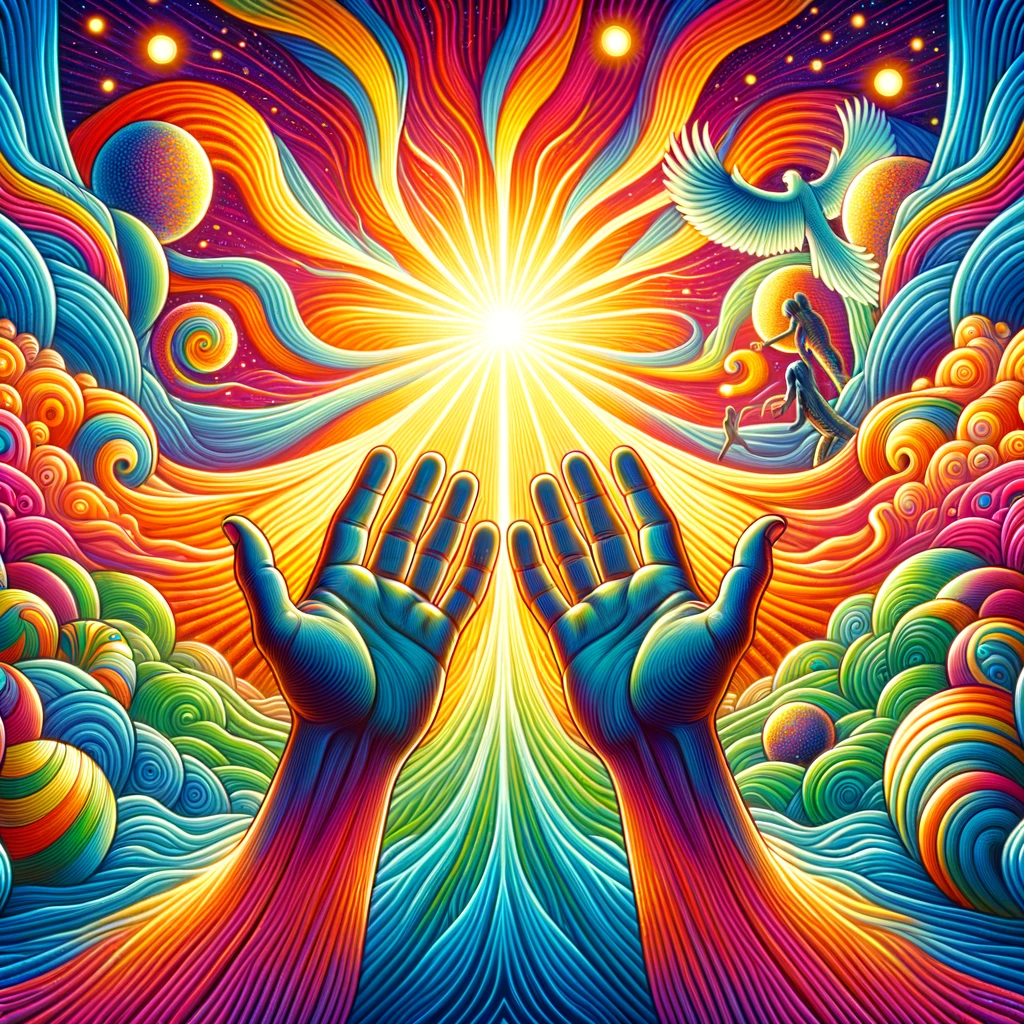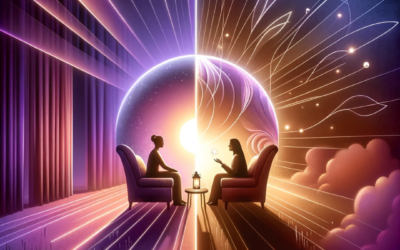The increasingly common term psychedelic renaissance has been steadily creeping into the mental health limelight, causing more and more researchers to delve back into the science of psychedelics to treat depression, obsessive-compulsive disorder, various addictions, and other mental illnesses.
In the US, the original psychedelic research wave occurred during the 1950s and 1960s, mainly at Johns Hopkins University and the University of Maryland. This was after Albert Hofmann discovered the psychoactive properties of LSD in 1943. The original research showed psychedelics as promising treatments for various mental health diagnoses. But once these substances became associated with counterculture fear, the push to remove them from society began. Not long after fear was incited, the Controlled Substances Act was passed in 1970, which shut down all research into the benefits of psychedelics throughout the United States and subsequently forced global psychedelic research to come to a screeching halt. Since then, psychedelics have developed a bad rap, and much of what the public hears about these drugs is often negative, painting only the picture of the potential harms of psychedelic drugs. But there is so much more than meets the eye.
The resurgence of psychedelic research has fueled today’s psychedelic renaissance. This new wave of research is uncovering the therapeutic benefits of these still illicit substances while ushering in a paradigm shift for psychiatry and mental health care.
To date, psychedelics are still under a watchful eye and remain controlled substances under federal law. Nevertheless, the U.S. Food and Drug Administration (FDA) has allowed for more psychedelic research. These revived studies have shown the potential mental health benefits of psychedelics to reverse symptoms of anxiety, depression, PTSD, and substance abuse by encouraging the growth of new neurological pathways in the brain. These recent studies even suggest that psychedelic drugs may treat some mental illnesses more effectively than conventional medicine, with some therapeutic benefits lasting for months after a single dose.
To be considered a true psychedelic, the drug will cause psychological, visual, and auditory changes and often a substantially altered state of consciousness, hence the classification as hallucinogenic. In today’s culture, the term psychedelic is often used more broadly to include MDMA and cannabis; however, the classic psychedelics are Mescaline, LSD, Psilocybin, and DMT.
PSILOCYBIN
Psilocybin, also referred to as magic mushrooms, is considered one of the most well-known psychedelics and has been used for thousands of years as a spiritual and medicinal medium. Known for its mystical experience, users who embark on a magic mushroom adventure typically experience a sense of euphoria, connection, and a distorted sense of time. Altered serotonin levels in the brain usually cause this experience.
In light of the psychedelic renaissance, several new studies have found Psilocybin effective in treating depression and nicotine and alcohol addictions. Studies have also shown it effectively relieves the emotional distress of people with life-threatening cancer diagnoses.
While Psilocybin is still a Schedule 1 drug, since 2018, researchers from Johns Hopkins University have been pushing to change the classification in hopes of making it available through prescription.
LSD (Lysergic acid-diethylamide)
LSD was first embraced by researchers and the mental health field in the treatment of anxiety, depression, and OCD behavior when discovered by Albert Hoffman in 1943. With well over 1000 studies conducted between 1949 to 1966, LSD was well-researched and quite popular in the psychiatric field until research was forced to go underground.
Today, while still not widely accepted or administered worldwide and used more recreationally than scientifically, LSD-assisted psychotherapy and research have gained momentum in their findings. Some modern clinical research has found that when administered in a therapeutic setting, LSD increases feelings of closeness to others, openness, trust, and suggestibility. Additionally, in patients with anxiety associated with a life-threatening disease, anxiety was reduced after a few doses for an extended period.
It is important to note that, if taken in high doses, LSD can result in a highly negative experience or a bad trip.
Much research still needs to be done to understand its full benefits and effects, but so far, the evidence found has shown to be promising. So much so that slowly the perception of LSD is starting to change from a harmful drug to one that can be helpful to one’s mental health and overall well-being.
DMT (Dimethyltryptamine)
Though having low addictive properties and having been shown to aid some people with treatment-resistant depression, DMT is still recognized as a Schedule I drug and is not acceptable for medical use. Dimethyltryptamine, or DMT, unlike other psychedelics, is a natural chemical found in many plants, animals and is even produced in the human brain.
An article published by Freethink also notes that:
While other psychedelics have similar effects, DMT seems uniquely suited for psychedelic-assisted therapy for three main reasons. For one, its effects only last about five to 20 minutes, unlike other psychedelics that can last more than eight hours. The benefits of DMT also don’t diminish with repeated dosing. And because DMT is naturally produced in our brains, scientists have a relatively high degree of confidence that it’s safe to consume under the right circumstances.
It goes on to say that brain scans of those who ingested DMT show brain-wave patterns that “resemble those of the dreaming state and that the drug seems to give rise to radically new kinds of connectivity in the brain.”
Some clinical trials conducted in London have researchers believing that they are on the precipice of a mental health treatment revolution and that DMT could be a powerful treatment for depression because, although conventional treatments help stabilize mood, they don’t fix the underlying psychological issues that can contribute to depression.
MDMA (methylenedioxymethamphetamine)
Commonly known as Ecstasy or Molly, MDMA is a psychoactive drug that heightens the senses and boosts emotion. When taken, MDMA releases feel-good neurotransmitters within the brain, such as serotonin, norepinephrine, and dopamine, along with hormones associated with trust and bonding (oxytocin and prolactin). Additionally, the activity in the left side of the amygdala (associated with fear and trauma) is reduced. The combination creates an ideal setting for people with PTSD to open up about difficult emotions. It allows them to self-reflect and work through the traumatic events they may have experienced.
One study found that 67% of people reported no longer meeting the criteria for PTSD a year after they finished MDMA-assisted therapy. There have even been dicussions about the Food and Drug Administration approving the use of MDMA and psilocybin for treating PTSD and depression, within the next fews years.
Findings from past and present studies indicate that psychedelics aid in improving mental health by weakening or ‘dissolving’ the ego to help see the ‘bigger picture’ by suppressing the part of the brain system responsible for thoughts surrounding ourselves, including self-doubt and self-criticism. This shift in perception allows thoughts, ideas, and even traumas to be viewed through a different lens and seeing things from a different point of view can ultimately impact how we cope.
It is important to note that, like any drug, psychedelics may not be for everyone and can be harmful and even deadly if not administered properly. However, if administered to the right person, under the right circumstances, psychedelics may be the new wave of medicine that saves lives.
Sources:
Liechti, M. Modern Clinical Research on LSD. Neuropsychopharmacol 42, 2114–2127 (2017). https://doi.org/10.1038/npp.2017.86
Johnson, S. 2021. Is DMT the best new treatment for depression? – Freethink – Sacred Medicine Society. https://sacredmedicinesociety.com/is-dmt-the-best-new-treatment-for-depression-freethink/
MDMA-Assisted Therapy for PTSD. MAPS. Retrieved from https://maps.org/mdma/ptsd/
Smith, M. 2021. MDMA-Assisted Therapy for PTSD: What to Know. WebMD. Retrieved from https://www.webmd.com/mental-health/what-is-mdma-assisted-therapy-ptsd







0 Comments